Raising Water Consciousness through
World’s Biggest Photo Exhibition and
Largest collection of Photo Stories on Water
Photo Stories | Drinking Water
Integrated Solution for Urban Drinking Water Challenges
Nandita Singh and Om Prakash Singh
21 February, 2017
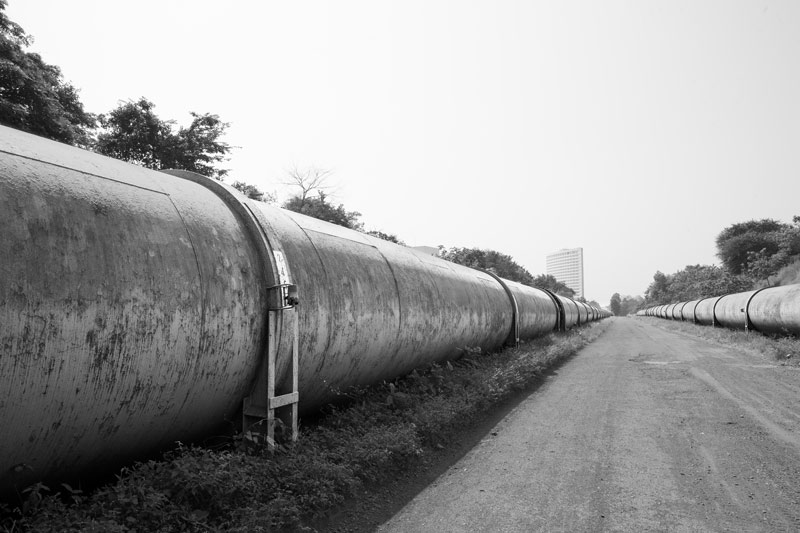
Urban women, men and children in India are exposed to different kinds of drinking water challenges which adversely affect their enjoyment of the human right to water and of other concomitant human rights including health, education and development. These multifarious challenges and the ongoing government responses have been presented in previous stories dated January 15 and January 30, 2017 respectively. In many cases, the government has tried to minimize the gap by importing water from outside, generally from rivers, lakes and groundwater reserves located in the rural hinterlands. However, is large-scale importing of water a viable solution for the rapidly growing urban centers of India? Further, doesn’t this approach also strip the local inhabitants in the rural hinterlands of their human right to water? How can the urban water challenges be addressed more holistically, adequately and sustainably? This photo story presents an integrated solution for addressing urban water challenges that can help resident women, men and children enjoy their human rights connected to water and also foster sustainable urban development. According to this integrated solution, importing additional water from outside should be an alternative to be adopted only when absolutely essential. It rather proposes that for sustainable urban drinking water supplies, there is a need to adopt policies and practices that combine protection, augmentation and development of the existing urban water resources with conservation, recycling and reuse of the resource. Wasteful water uses at individual and public levels should be minimized and rainwater harvesting in various forms should be promoted. There is also need to improve the water quality in the existing water bodies so that these can be utilized. The title photo depicts the most commonly adopted yet least sustainable practice of importing drinking water through pipelines for residents of Mumbai, Maharashtra from considerably distant dams located in Thane district of the state.
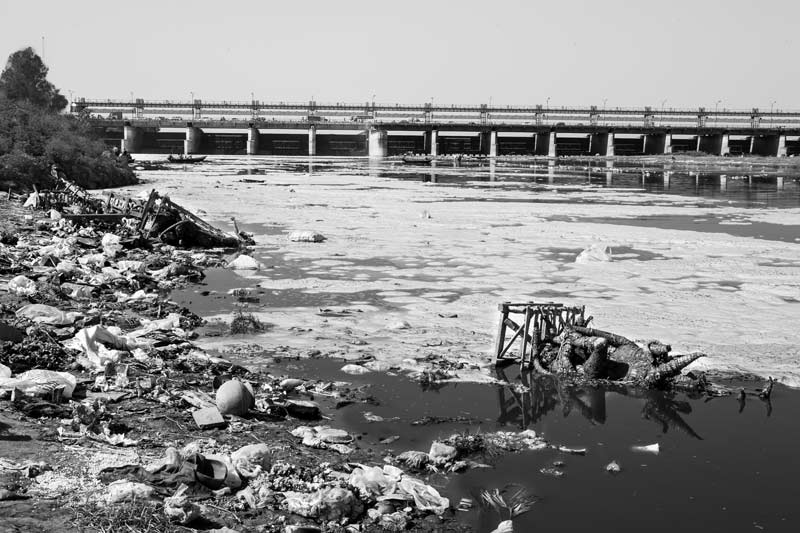
A polluted stretch of river Yamuna in the National Capital Territory of Delhi that needs to be cleaned immediately and the health of the river restored
Rivers, lakes and other surface water bodies in Indian cities and towns are becoming increasingly polluted. According to the Central Pollution Control Board (CPCB), the number of polluted rivers in the country has grown from 121 in 2009 to 275 in 2015. The 22 km long stretch of river Yamuna in Delhi is severely polluted. Most common sources of pollution are untreated sewage, industrial effluents, and dumping of solid waste. Heavy pollution of surface water bodies renders them unusable for drinking and other consumptive purposes. There is need to ‘clean’ the present pollution and restore the chemical and ecological water status as well as adopt holistic action engaging the citizens so as to prevent future degradation of these valuable urban water resources. Such restored water bodies can effectively serve to fulfil the drinking water needs of a substantial part of the urban populations.
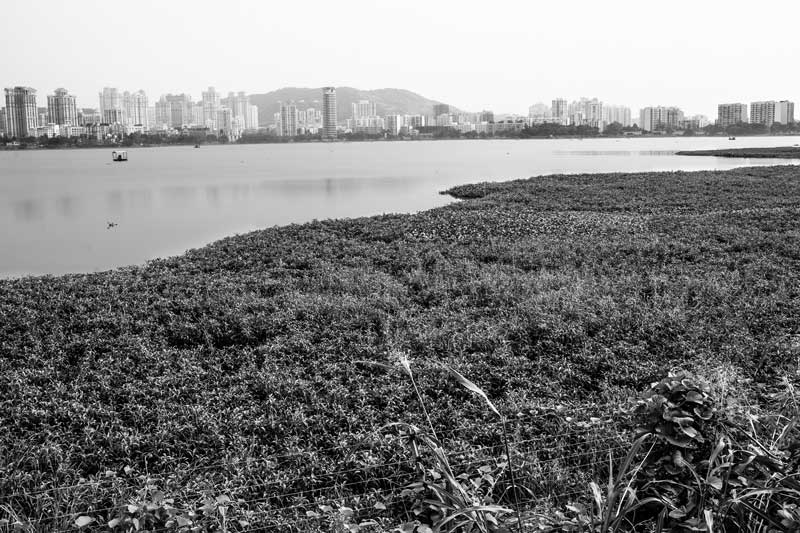
Powai Lake - the encroached and highly contaminated former water supply source for Mumbai, Maharashtra
Encroachment and contamination are major problems facing urban water bodies. The Powai Lake in Mumbai is a significant example. This lake, spread over an area of 2.1 square kilometer, was built in 1891 for supplying drinking water to the city but now its water is declared unfit for drinking. Against the permissible Biochemical Oxygen Demand (BOD) level of 3 mg/L up to which water is considered fit for human consumption, the level was found to range between 27 and 34 mg/L during a recent study in 2016. Population around the lake has substantially increased over the years, with the Indian Institute of Technology (IIT), National Institute of Industrial Engineering (NITIE), industries (notably Larsen and Toubro), several housing complexes and plush hotels having developed all around the lake periphery, causing encroachment of the lake bed as well as increasing pollution due to solid waste dumping and direct discharge of untreated sewage. While beautification and tourism development of local urban water bodies is widely attempted, the real need of the hour is restoration of their hydrological and ecological health which can help augment the available water resources in the urban milieu.
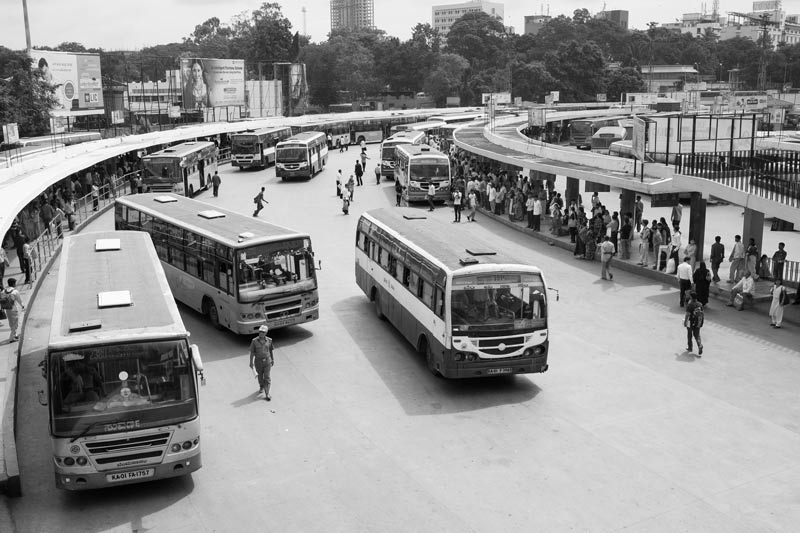
The erstwhile Dharmambudhi Tank completely encroached for construction of Kempegowda bus stand in Bengaluru city, Karnataka
Rapid urbanisation in many parts of India has posed serious threat to water bodies in and around the urban centers. Tanks, lakes, ponds and even river beds have fallen victim to large-scale encroachment due to increasing urban land demand. According to government records, Bengaluru was a city having around 650 lakes and tanks in the 1980s. Many of these were built by Kempegowda, who founded the city in 15th Century. In the absence of major rivers around, these were built to provide water for drinking, household uses, agriculture, cultural purposes, and also to meet the future urban growth. Additional purposes were to recharge groundwater and prevent flooding. The erstwhile Dharmambudhi tank mentioned in the photo supplied drinking water to the city till 1895. As many as 195 Bengaluru lakes and tanks are known to be encroached, of which 90 have been converted into residential layouts, market complexes, schools, hospitals, stadiums and bus stands. For sustainably augmenting urban drinking water sources and promoting groundwater recharge there is an urgent need to halt the encroachment of surface water bodies and restore their health to the maximum extent possible.
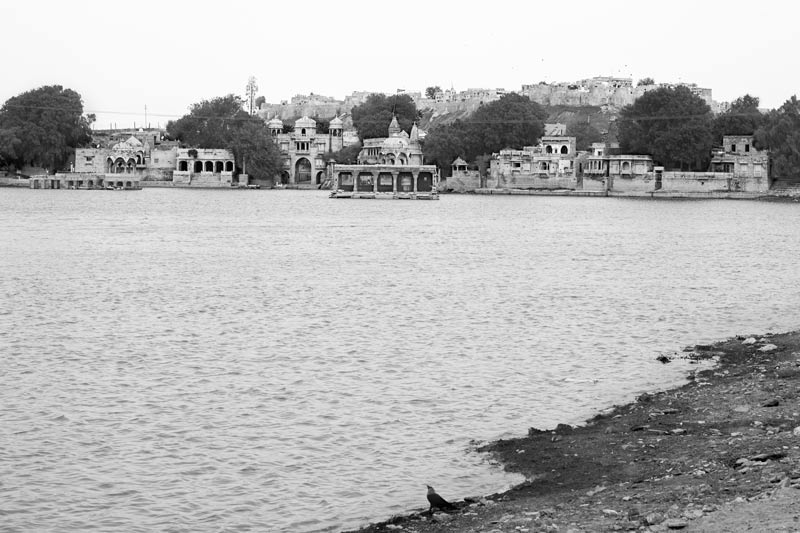
Gadisar Lake – the erstwhile source of drinking water in Jaisalmer city, Rajasthan
Lakes and tanks have been the localized source of drinking water in many historical cities and towns of India, but these precious sources have come to be disregarded with the coming of centralized piped water supplies, which in many cases depend upon distant ‘alien’ water resources. Gadisar Lake, was excavated in 1367 by Rawal Gadsi Singh as a perennial rainwater lake that never used to dry up. It was the main source of drinking water for residents of Jaisalmer city until the 1970s when the Indira Gandhi Canal water began to be supplied through pipelines. Besides supplying surface water, the lake helped efficient recharge of groundwater that enabled shallow wells in the vicinity supply drinking water for a major part of the year. However, today it is no longer seen as a source of the city’s drinking water and remained neglected for long, only to be rejuvenated for tourism in the recent years. For addressing the urban drinking water challenges, it would be important to rejuvenate and restore the existing lakes and other urban surface water sources so that drinking water needs can be handled at a local scale which would be more efficient.
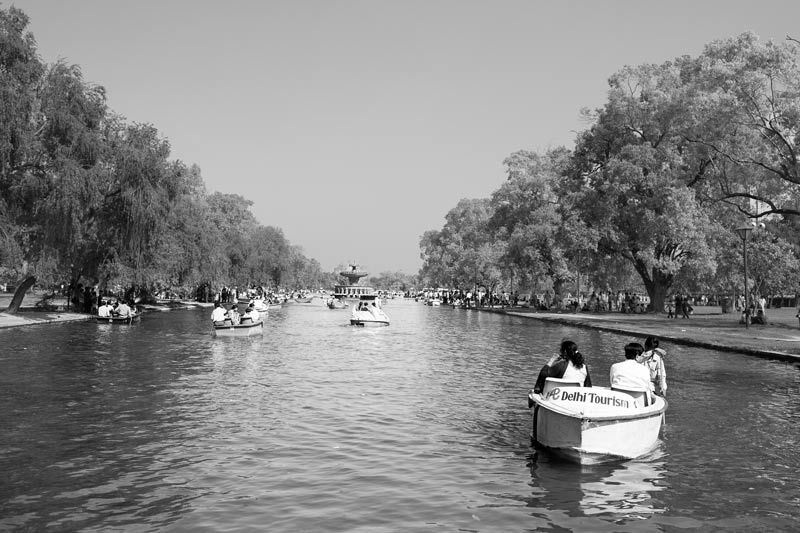
Promotion of tourism at the cost of scarce and precious groundwater resources at India Gate in New Delhi district, National Capital Territory of Delhi
While groundwater is an important source of urban drinking water supply, misuse and overuse of this scarce and precious resource is well-known in urban pockets of India. Many natural water bodies and water pools once depending on surface water are now developed as tourist attractions by mining groundwater. Obviously filling these large water bodies consumes huge quantities of groundwater which could make the approach unsustainable. Water level in the India Gate pools is maintained through ten months in the year by pumping out groundwater which requires 24 hours continuous pumping for three days at a stretch for filling an empty pool. A filled up pool further requires daily pumping for 4-5 hours. This wasteful practice continues even when the Central Groundwater Board (CGWB) has reported groundwater depletion up to critical level in the district. There are a number of other lakes in Delhi where groundwater is used for tourism such as Naini Lake in Model Town and Sanjay Lake in Trilok Puri. Such wasteful use of groundwater in Indian cities needs to be immediately stopped and replaced by more sensible options such as rainwater harvesting which can provide surface water as well as support groundwater recharge.
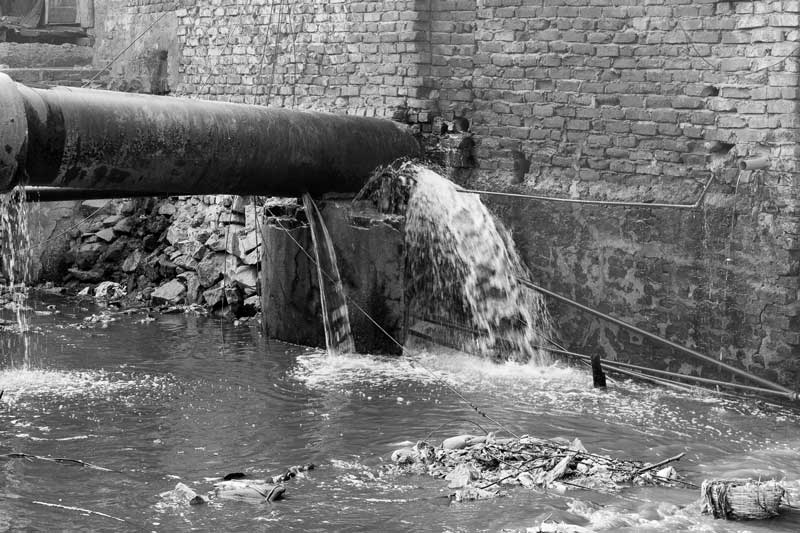
Major leakage in a water supply pipeline in South-East district, National Capital Territory of Delhi
Urban water availability may get substantially reduced due to old and improperly maintained piped networks that lose water through leakages. In Delhi alone, a recent CAG report notes that an alarming 40% of the water supplied in the city is lost due to leakages in the distribution network. This leads not only to wastage and hence lost revenues but also inequity. The loss of substantial volumes of water puts undue pressure on the remaining supplies, which obviously has to be first delivered to the residents of the planned colonies, leaving those in the unplanned settlements with even lesser water. Repair and proper maintenance of water distribution networks is thus an urgent task that urban water utilities must attend to so that maximum utilization of available water supplies can be ensured.
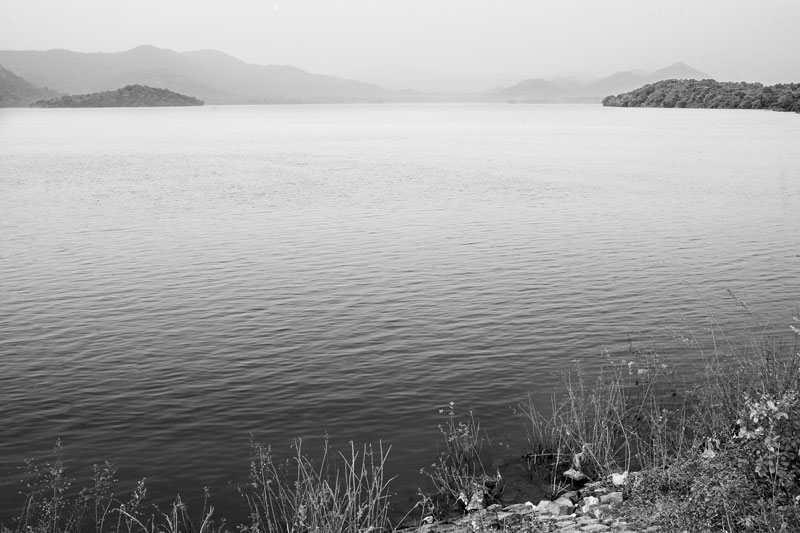
Vihar lake – the first piped water source for the city of Mumbai, Maharashtra
Vihar Lake, is a large reservoir in Mumbai created by constructing three earthen embankment dams with a masonry spillway on the Mithi River that receives water from a large catchment in the Powai-Kanheri hill ranges. Having a surface area of 7 sq. km., it was constructed in 1860 as the first piped water supply scheme for Mumbai. In an area where the average annual rainfall exceeds 2400mm, this reservoir serves to store over 27000 million liters and even today continues to partly meet the drinking water needs of South Mumbai region. Such localized water sources are an excellent option for urban water supply especially in areas having sufficient rainfall where the rain water can be locally stored and supplied for fulfilling drinking water needs of the city.
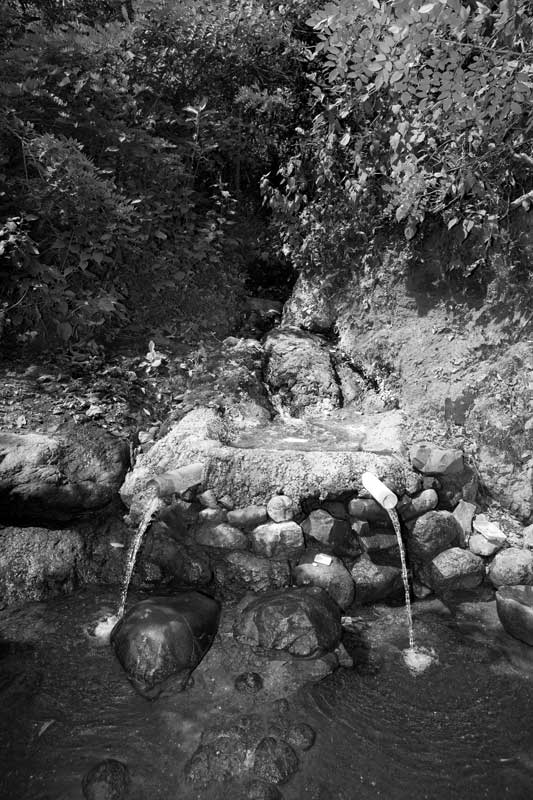
Leakage in the embankment of Vihar Lake, Mumbai, Maharashtra
Vihar Lake however suffers from large-scale water leakage through its embankments. The embankments have not been repaired and maintained properly by the civic authorities as a result of which huge volumes of water are lost every day due to continuous 24 hours leakage at a number of points. Obviously, this lost water could have played a significant role in improving water supply in the city where there is much scarcity. However, thanks to the local residents around who have made temporary arrangements to make the best use of this leaking water by fixing pipes for water collection as shown in the photo. There is need to develop an efficient system of protection and regular maintenance of the urban water bodies so that the precious resources are not lost and their utilization can be maximized for the benefit of the urban residents.
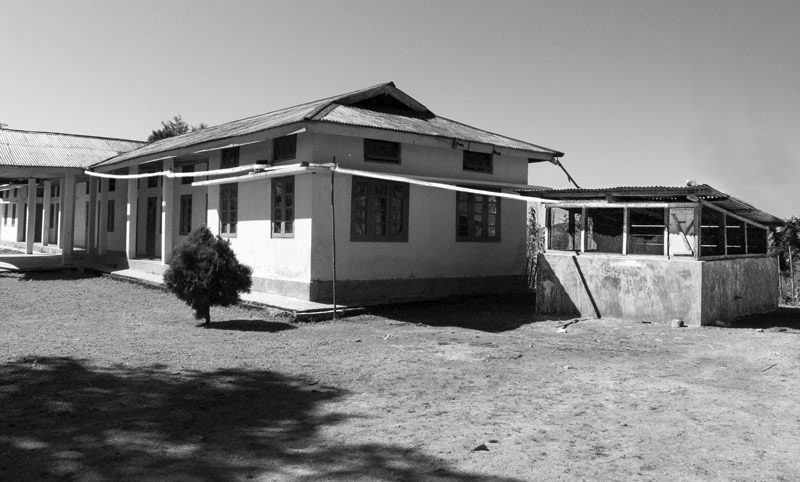
Rooftop rainwater harvesting in Noksen town, Nagaland
Rainwater harvesting is a sustainable way forward for augmenting urban water reserves. Many cities and urban areas in India receive a substantial amount of rainfall but these received waters just flow away into stormwater drains and become a lost resource. Rooftop rain water harvesting is a method to utilize this valuable resource by capturing it from roof catchments and storing in underground reservoirs and external tanks. Rooftop rain water harvesting systems are easy to construct, operate and maintain, and can provide for fulfilment of a substantial part of the drinking water requirements of a household. Rainwater is known to be the purest form of water which is high quality, soft and low in minerals and can be absolutely safe for drinking if collected and stored hygienically. The rooftop rainwater harvesting unit shown in this photo has been installed in a hilly area in Nagaland that receives about 2500 mm annual rainfall. Efforts are already being made to promote rain water harvesting in many cities. Fr example, in Delhi all schools and new institutional buildings are being provided with rain water harvesting systems by different government construction agencies.
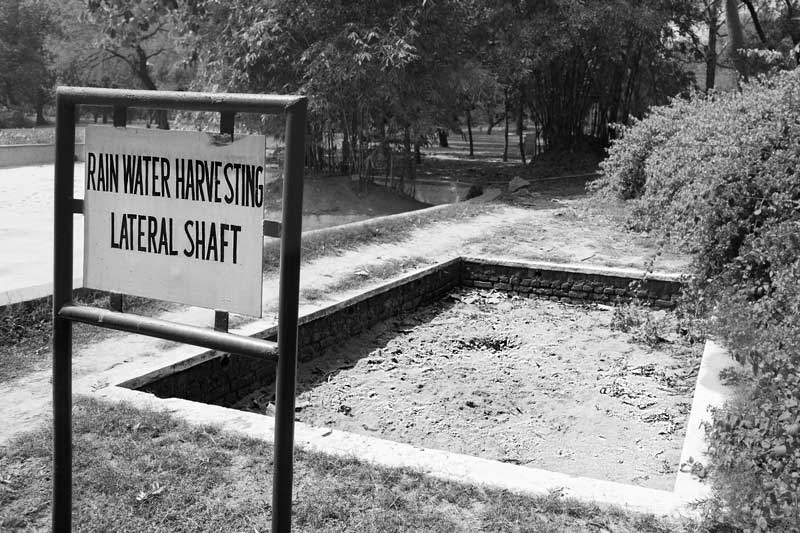
Rainwater harvesting for groundwater recharge in New Delhi district, National Capital Territory of Delhi
Rainwater harvesting is also a promising alternative for augmenting groundwater reserves in urban areas where due to increasing built-up areas, natural groundwater percolation is extremely limited. Delhi receives 611 mm of average annual rainfall and the number of rainy days is as low as 20-30. However, the geology of Delhi makes it favorable for artificial groundwater recharge, groundwater being an important contributor to the city’s water supply. At Lodhi Garden in Delhi, lateral recharge shafts have been constructed along with injection wells for artificial groundwater recharge. These shafts are generally in the form of trenches 2 to 3 meter wide and 2 to 3 meter deep, the length of which depends on the volume of water to be handled. Injection wells are structures similar to tubewells but these augment groundwater storage by pumping in the collected surface water under pressure. Rainwater harvesting structures for groundwater recharge have been installed at many places in New Delhi, Shram Shakti Bhawan and President’s Estate being important examples.
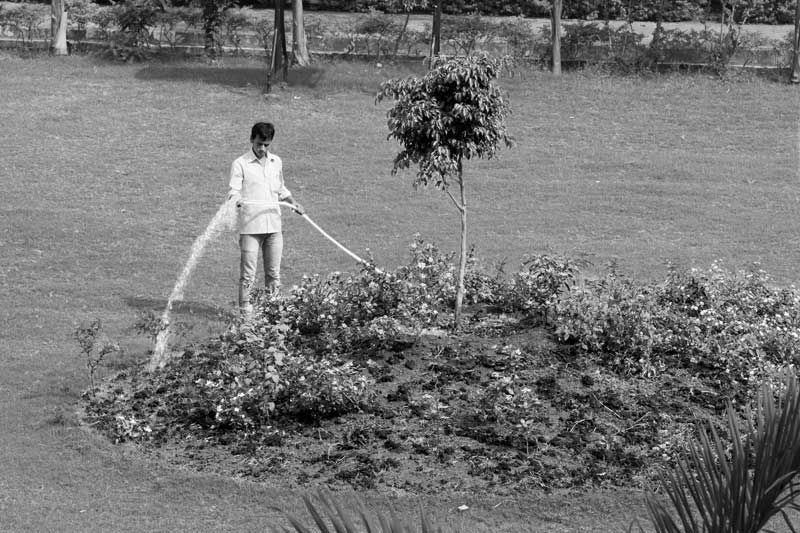
Gardening with treated wastewater in a public park inside a residential colony in Mumbai, Maharashtra
Recycle and reuse of wastewater is an excellent way to preserve the precious freshwater resources for drinking and other more critical uses in the ever-expanding cities. In fact it is important to recognize wastewater as a valuable resource in itself. Watering gardens with treated wastewater not only helps conserve water but also provides essential nutrients to the plants and vegetation. This practice is also being increasingly adopted in Delhi as at Lodhi Gardens. Another way of water reuse is to collect wastewater from bathrooms and pump it to a separate overhead storage tank on the roof which can be then connected with cisterns in the toilets for flushing. Such a plan has been developed by the Delhi Jal Board recently.
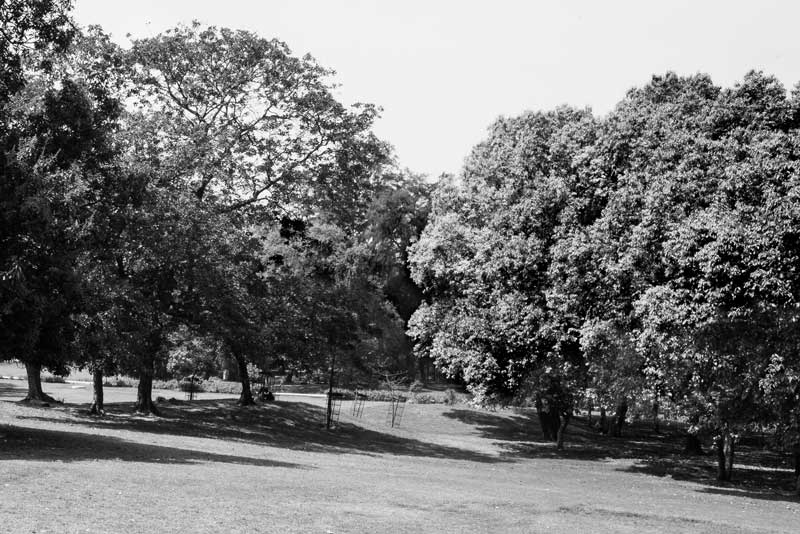
Lodhi Gardens with lush green cover in the heart of the city in New Delhi district, National Capital Territory of Delhi
Cities and urban areas in India are being increasingly covered by concrete and built structures, minimizing the possibility of natural recharge of groundwater reserves. However, extraction of groundwater continues unabated, leading to imbalance between use and recharge, ultimately culminating in overexploited aquifers. To avoid this risk, there is need to enhance green cover in urban areas. This will help enhance natural percolation of water which in turn can boost the groundwater reserves that can be utilized for different purposes. Increased recharge can also help dilute existing chemical contaminants in groundwater, thereby improving the quality for drinking purposes. Lodhi Gardens is a large city park spread over an area of 90 acres (360,000 sq. m.) and provides a good potential of natural groundwater recharge.
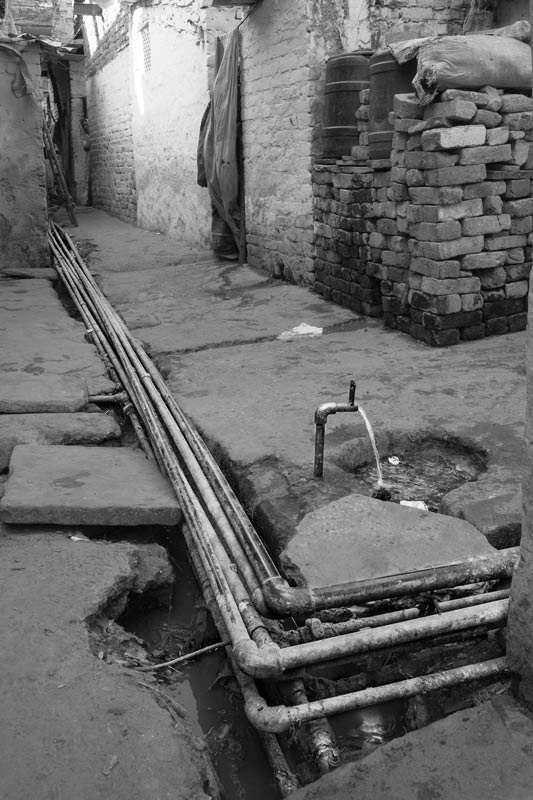
Piped network bringing water supply to an informal colony in South-East district, National Capital Territory of Delhi
Inequitable water supply is a major concern in many cities and urban areas where those living in the unplanned informal settlements have to bear the brunt. In many cases these colonies are served through community tapstands, tanker supplies or group connections, but these options are still inequitable since the per capita water availability remains very low, besides the hardships imminent in collecting water from such alternatives. There is need for a stronger political will and more realistic planning in the cities so that greater equity can be ensured as seen in this photo, and all urban dwellers can enjoy household level water connections.
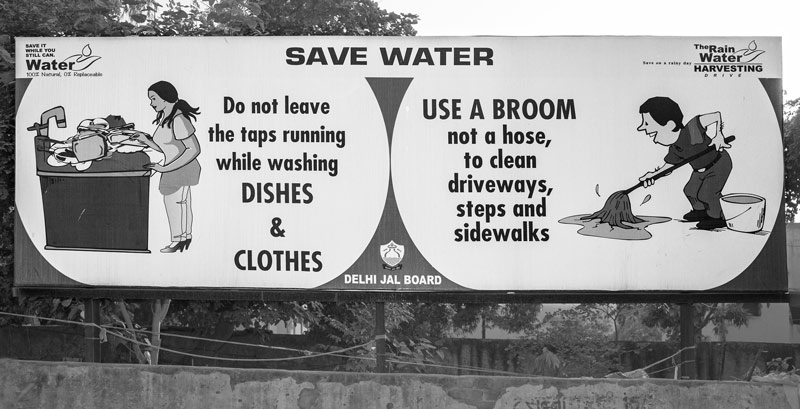
An attempt at sensitizing urban residents for water conservation in South-East district, National Capital Territory of Delhi
There is large-scale ignorance amongst urban residents about the seriousness of the challenges facing the water resources available in their cities. Many of them indulge in wasteful practices such as letting water unnecessarily flow from taps or washing cars or courtyards with excess of water, or gardening at home with the precious drinking water supply. There is need to inform and sensitize the urban water users about the value of the water flowing into the taps and educate them about better water use and conservation practices so that the scarce water supplies can be utilized most efficiently to the maximum possible extent. Government as well as non-governmental organizations (NGOs) concerned with water management must shoulder the responsibility of sensitizing and educating the urban water users on these concerns.
The alternatives presented in the photo story above offer an important food for thought for urban policy makers, planners and practitioners in the water sector. These alternatives need to be seen as an integrated solution for addressing the various urban water challenges. It is amply clear that importing water from external sources is not a sustainable solution. The wise solution lies in a ‘decentralized’ approach based on protecting, developing and utilizing the locally available urban water resources – the rivers, lakes, reservoirs as well as groundwater reserves, coupled with adoption of efficient water use and conservation practices. There is need for legal frameworks and good urban development plans where the existing urban water bodies are not allowed to be encroached or polluted. There is need for government agencies to develop and implement realistic plans for cleaning up the polluted local water bodies, rejuvenate the dying ones and maintain them properly, working together with NGOs and citizens so that these efforts can be sustained. The urban planning must also provide for sufficient green unbuilt areas so that the potential of groundwater recharge can be maximized, together with regulation of wasteful use of precious groundwater such as for mere recreation or tourism. In general, rainwater harvesting needs to be promoted so that the local water resources can be augmented. There is also need to plug leakages in the existing water distribution networks so that the unaccounted for water can become available for use. Simultaneously there is need to promote the practice of reuse and recycle of wastewater at the local scale and launch public campaigns for sensitizing and educating urban users about the water challenges and best practices. The adoption of an integrated approach based on the above framework would lead to effective realization of the water-related human rights of women, men and children in urban areas as well as rural hinterlands and also support sustainable urban development.